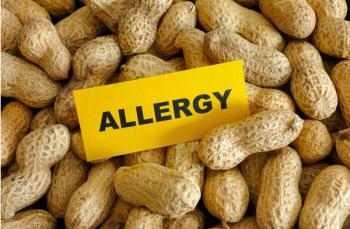
Binge Drinking Common Among High Schoolers
ATLANTA -- Binge drinking is common among high school students and is tied to other risky behaviors, according to a national survey by the CDC.
ATLANTA, Jan. 2 -- Binge drinking is the most common way that high schoolers consume alcohol and is tied to other risky behaviors, according to a national survey by the Centers for Disease Control and Prevention.
Among the more than 15,000 teens surveyed, nearly half reported drinking alcohol in the prior month, and more than 60% of those who drank had binged on five or more drinks, said Jacqueline W. Miller, M.D., of the CDC here, and colleagues.
These "alarming" findings call for stronger interventions to reduce both youth drinking and excessive drinking in the general population, they said in the January issue of Pediatrics.
"Pediatricians and family practice physicians should be aware that most of their high school-aged patients drink alcohol and usually do so to the point of intoxication," they wrote. "Some studies have shown that screening and brief intervention in medical settings may be helpful for youth who screen positive for alcohol problems."
The school-based National Youth Risk Behavior Survey included a nationally representative sample of students in grades nine through 12 at public and private schools. The survey was anonymous, self-administered and voluntary (overall response rate 67%).
The researchers found:
- 44.9% of the students (representing 7.4 million high schoolers) reported drinking alcohol during the prior 30 days,
- 28.8% binge drank (representing 2.6 million students),
- 16.1% drank alcohol but did not binge drink (representing 4.7 million teens), and
- 67.4% of male- and 61.1% of female-current drinkers reported binge drinking.
Among binge drinkers across all grade levels, the findings were:
- 68.7% (representing 3.2 million teens) reported doing so at least once in the prior month.
- 73.3% (or 1.8 million) of boys and 63.7% (or 1.4 million) of girls binged on at least two days.
- 28.2% (representing 700,000) and 18.3% (representing 400,000) binged on at least six days.
- 13.6% (or 340,000) and 6.8% (or 150,000), respectively, binge drank on at least 10 days.
While any alcohol consumption was associated with increased health risk behaviors, the association was especially strong for binge drinking. Compared with students who reported no drinking, the findings were:
- Riding with a drunk driver was 3.5 times (95% confidence interval 2.8 to 4.2) times more common among current drinkers and 10.8 times more likely (95% CI 9.0 to 13.1) among binge drinkers.
- Being sexually active was 2.2 more likely (95% CI 1.9 to 2.6) among drinkers and 5.5 times (95% CI 4.5 to 6.5) more likely among binge drinkers.
- Smoking tobacco was 4.2 times (95% CI 3.3 to 5.3) more likely among drinkers and 18.9-fold (95% CI 15.3 to 23.4) more likely among binge drinkers.
- Being a victim of dating violence was 1.9-fold (95% CI 1.5 to 2.3) and 3.7 times (95% CI 3.0 to 4.5) more likely, respectively.
- Attempting suicide was 2.0-fold (95% CI 1.6 to 2.7) more likely among drinkers and 4.3 times (95% CI 3.5 to 5.4) more likely among binge drinkers.
- Using illegal drugs was 3.2 to 5.9 times more likely among drinkers for various drugs while it was 12.3 to 63.2 times more likely among binge drinkers.
There was a strong dose-response relationship between binge frequency and the prevalence of these other risky behaviors. School performance was also linked to binge drinking (19.7% of students with "mostly A's" who reported binge drinking compared with 49.3% with "mostly D's or F's").
Girls reported more current drinking with no binge drinking (17.8% versus 14.3%), but their binge-drinking rates were not significantly different (27.9% and 29.5%).
Non-binge drinking prevalence did not vary by age or school grade, but binge-drinking rates increased with age (17.8% age 12 to 14 versus 38.7% 18 and older) and school grade (20.2% of ninth graders versus 37.8% of 12th graders). The highest binge drinking rate was among male drinkers ages 18 and older (74.0%).
The high rates among young girls were particularly worrisome, Dr. Miller and colleagues said.
"These findings are especially troubling because girls are more vulnerable to binge drinking-related reproductive health outcomes," they wrote, as well as other alcohol-related harms relative to boys because of their lower body weight and less of the enzyme responsible for metabolizing alcohol per unit of body mass.
The authors noted that the study was limited in that it could not establish a temporal relationship between alcohol consumption and the risk behaviors studied and could not rule out unmeasured confounding factors, such as parental alcohol abuse and emotional neglect. Also, the self-reported alcohol intake was likely to underestimate true prevalence.
Dr. Miller and colleagues concluded that in addition to physician involvement, adequate funding and community participation for underage drinking prevention strategies will be necessary.
"Effective intervention strategies (eg, enforcement of the minimum legal drinking age, screening and brief intervention, and increasing alcohol taxes) should be implemented to prevent underage alcohol consumption and adverse health and social consequences resulting from this behavior," they suggested.
The American Academy of Pediatrics encourages clinicians to ask adolescents about their alcohol use then refer those with suspected drinking problems for age-appropriate treatment and to include substance abuse prevention guidance in routine and episodic office visits.
Newsletter
Enhance your clinical practice with the Patient Care newsletter, offering the latest evidence-based guidelines, diagnostic insights, and treatment strategies for primary care physicians.

















































































































































































































































































